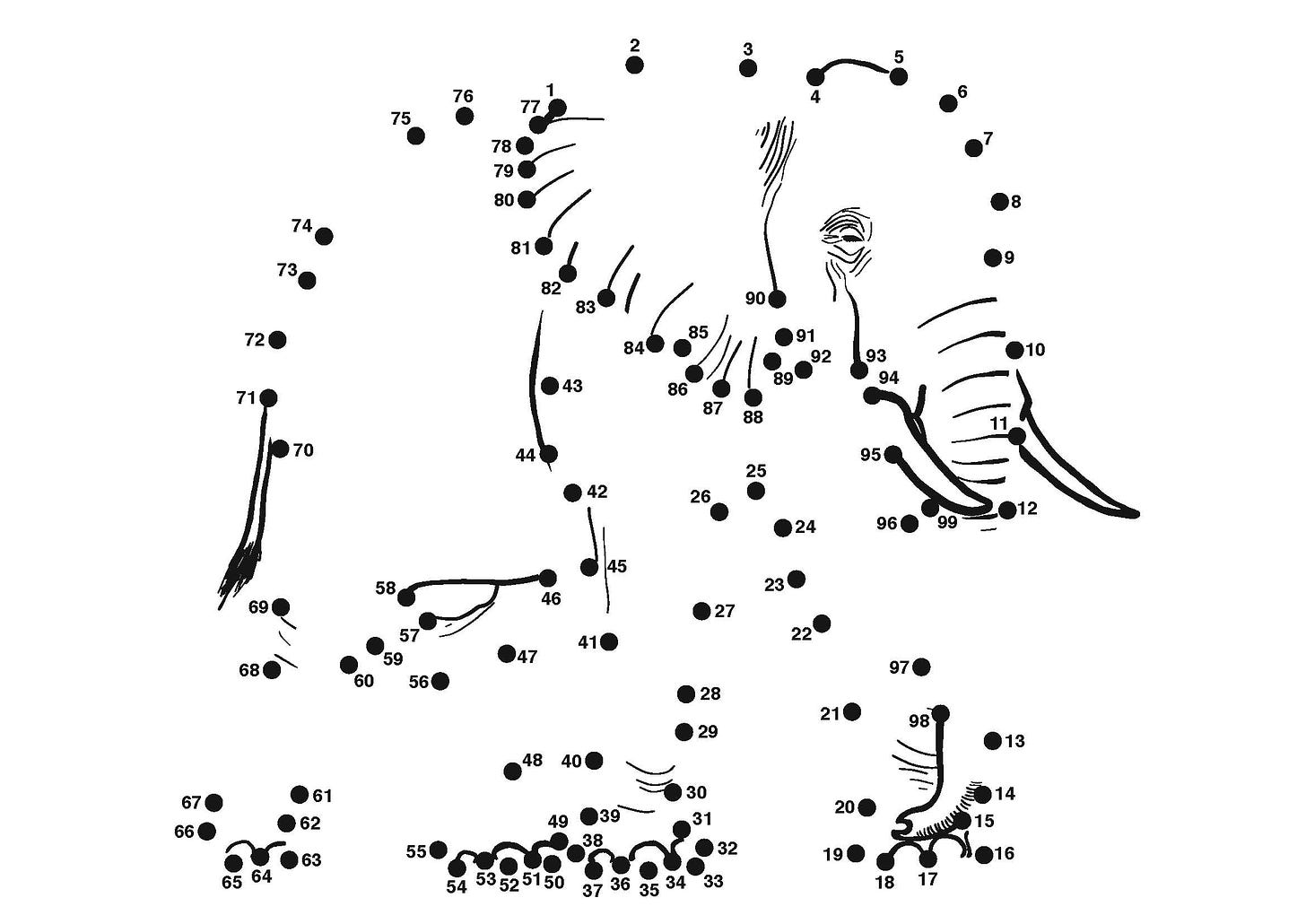This is Part 2 of the serialization of my second interview with Innovation Scientist, Tony Fitzgerald. In this episode, we discuss how physical symptoms and chronic pain may arise as a result of the brain's prediction from past experiences.
Some comments before the transcript below.
For more than 2000 years we have had a myth that mind and body are divided. We have our whole healthcare system divided in two due to this.
That is why all chronic diseases and probably also cancer diseases are considered to have no cure because they fall in between these two divisions. With this interview, we get help from science from the so-called mental side as Tony explains it, about how I, as a therapist and coach healing trauma, can help people with chronic diseases such as Parkinson’s.
I do that by finding the root cause of a symptom and resolving the underlying trauma (I call it trauma or body memory as the size of the event is not so important, it is the impact it had on people).
That is how I help people stop the prediction in the present, based on past experience, that bad things will happen. The prediction gives you stress and stress causes symptoms. So after therapy, people stop the prediction and start living without stress, anxiety, and pressure.
Here are some of my recent examples from my therapies on how the prediction of our future becomes contaminated by past fear via body memories that store this information and emotions. This prediction causes symptoms.
A woman with Parkinson’s had tremors that led us to this: as a 5-year-old child overheard the conversation between her mother and father. The father told the mother, that he would leave the family forever.
That caused a lifelong fear of abandonment, and this stress caused tremors as a symptom and irrational (predicting) fear that even her children would leave her.
A woman has a stress breakdown and sick leave from her job. Her heart and whole body went into an inner tremor which caused a high heart rate followed by extreme tiredness.
The root cause turned out to be an episode when she was 4 years old:
She was late for the family dinner and her father in anger threw her across the floor, so she hit the wall hard. That gave her an inner tremor in most of her body. It was provoked by the story of a colleague being hit by a resident of a care home she was working at, reminded her unconsciousness about the childhood episode and she started to predict fear. After therapy, she got an enormous tiredness, when her whole body relaxed.A man has a sore throat with a lot of tension, which is considered part of his Parkinson's diagnosis. Sometimes he was afraid of suffocating because he could not swallow.
In therapy, this long-forgotten story came up:
when he was a child, his father had a distillery in the basement, making all kinds of wine and beer. One day, when my client was an 8-year-old boy, he went to taste one of the brews. But it was boiling and he burned his throat. He then took water from a pipe to cool down, but there was so much pressure on the water that he almost drowned himself. After the therapy, this area of his throat has softened, and understanding how he ended up with swallowing problems was a revelation.A man has a tremor. Going to the root cause this comes due to his brother always tilting him and holding his arms to the ground when he was five years old. These episodes of bullying came weekly until he was 10 years old. For the next 60 years, his body was predicted to be attacked, and that caused of course tremors.
asked to tell how therapy affects these people's symptoms.
It is like asking how you feel after a wound has healed. We feel normal, no emotions, no sensations, nothing. It is only the very aware person who begins to notice that the symptoms are less frequent or less intense. The episode that triggered the body's memory and symptoms is now forgotten. Also, because people often have a lot of these body memories, it can take a while to feel a real reduction. We rarely have tools that can measure symptoms and minor changes.
Transcript
Lilian
So right now the world is divided in this viewpoint that you have mental diseases and physical diseases. That's the field I have been digging into with physical diseases like Parkinson's and sclerosis and similar. So how is the physical field of doctors and science going into that?
Tony
That's a really good question, Lilian. I think it's a really good question and there are a lot of connections there. I think it's impossible to unpack them all right now, but there's a book by Andy Clarke The Experience Machine, where he talks about this new understanding of the brain and making predictions that affect our perception and our body state, and our behaviour. In there, he starts to now talk about those links, about how physical symptoms arise from the action of these activities in the brain.
One area that might be interesting and you might have already come across is treating pain, chronic pain, as a prediction. So this is where you're just getting into physical symptoms. Pain is a physical symptom. What they see is that, so obviously, a lot of this comes about because we can look inside the brain. When they looked inside the brains of people with chronic pain, what they saw was the activity wasn't the pain centers lighting up, more it was these anticipation, expectation, and prediction centers lighting up.
So they, based on this whole new understanding of the brain, they said, well, if that's the case, if this chronic pain is an anticipation or prediction of the perception of pain, so pain becomes a perception now rather than an absolute experience. It's perception as in all the things we perceive. What if we treated it as a prediction? What would happen?
Lilian
That's what I do. I treat it exactly that way.
These people have been put in the box with physical symptoms but I treat them exactly as you are telling about helping them with the trauma in their life.
I can give away the tip that a war veteran was ok before the war, but broken after the war, so they can pinpoint the thing that went wrong with them, but a person with Parkinson's, has a long life of smaller things going on so. it's probably a lot of smaller things (traumas) going on that when they get older pile up and push them to have symptoms.
Tony
That makes a lot of sense, so if you now understand that these people suffer from pain perception, once they treat it with prediction, the results were that pretty much most of them recovered compared to standard treatments where most of them still after a year or so after the treatment period. They are still suffering in pain and that continues for a year, whereas the ones they treat as prediction most of them recovered and a year later were still recovered.
So, that points the way to these permanent type cures once you update the prediction, you're actually changing the downstream, and this is where it links up with what you're saying you're saying downstream is the physical symptoms. So somewhere there must be a cause of these physical symptoms, and what we're seeing now with the brain activity is we're getting to the root cause.
I think you spoke about the metaphor last time off the wobbly tire over time [leading to mechanical breakdowns], and those sorts of metaphors where you can understand how this small cause starts and becomes a bigger physical symptom later. So you know from the pain perception people, look up, Howard Schubiner, he is the guy who's leading this new understanding of treatment for pain. There's Mick Thackeray who understands pain as perception. So I think Mick's got a TED talk on pain perception. Howard Shuman has got a movie out. Mick Thacker's done a TED talk and these are on the science literature as well so if you want to look at that pain study that's in the literature.
So now they're understanding pain chronic pain as a perception and treating it as a prediction, these expectations in this type of brain activity.
What you're talking about goes a little bit beyond that, and so you've got to start to draw some lines between the dots. That's where it becomes a little bit blurrier, but the dots are getting more clear that connect our past experiences. If you think of this brain activity you've got the past and the past is used to generate your responses now, your body state. your behavior, even how you see the world.

So those then can start to drive if the expectations are a certain way you start to now expect a certain world you expect a certain [view] of yourself. Those can start to drive the body in a certain way, like that wobbly tire off its normal homeostasis. of its normal well-being, and once it deviates from that, I think we spoke last time learning about allostatic load do you remember that word?
That's where these impacts over the long term start to cause expense in the body and well-being. One of the reasons why we're starting with trauma is because trauma is a very clear line. There are things that happened in your past and we can actually update that.
And then downstream, even from where you're working, it's like the physical symptoms. If you look at them as downstream, which they are, from this brain activity by treating them upstream here in their root cause, you would expect some change, but that's going to take a little bit of time especially if there's an allostatic load for the whole body to start to heal again, not just the update, but actually the physical body as well, so there are a few more pieces.
For further info on my therapy/coaching methods
For those who are interested in becoming active:




